Last-Minute NYC Holiday Gift Guide 🎁
We’ve created a holiday gift guide with presents for the intrepid New Yorker that should arrive just in time—


In New York City, sky bridges are largely a thing from the past. As we mentioned in our last skybridge roundup, they exemplify the city’s push to tempt the creative boundaries of architecture. But aside from aesthetics, skybridges may come in handy as a temperature-controlled method of movement or as a means to decrease walker congestion on the ground. Cities that are heavily populated or suffer from extreme weather already have extensive skybridge systems, like the Minneapolis Skyway System and Mumbai’s Skywalk Project.
Here are a few more sky bridges that we came across in Manhattan:
Metropolitan Life Buildings (24th Street, between Madison and Park)
East of Madison Square Park was this walkway connecting the Metropolitan Life North Building to the Met Life Tower. The Tower, modeled after St. Mark’s Campanile in Venice, Italy, was the world headquarters of the company until 2005. The North Building served as the records warehouse for the company. Now, both buildings are occupied by Credit Suisse, although the upper floors of the tower were converted into the New York Edition Hotel. As of 2020, this sky bridge has been demolished.

International Toy Center (24th Street, just west of 5th Ave and Broadway)
This elevated footbridge west of Madison Square Park connected two buildings of the International Toy Center, which was once the United States hub for the toy industry. Although the south side building still hosts the annual American International Toy Fair, it is mostly occupied by other businesses now, including Eataly on the first floor. The connected building across the street is in the process of being converted into 10 Madison Square West, a luxury condo building. It was demolished since this article was published.

It looks like this skybridge is being used mostly for storage at this point, not as a pedestrian walkway.
Gimbels Department Store (32nd Street, between 6th and 7th Ave)
The building of what was once the flagship location of Gimbels department store, once the largest department store chain in the world, now holds the Manhattan Mall. Across the street, the store had an annex, so a three-story skybridge was built to connect the two buildings. The bridge was almost destroyed when the buildings switched ownership and function (the upper floors of the Manhattan Mall are offices). Thankfully, the green-tinted, monumental structure remains but its future still remains unclear. Take a look at the crumbling interior here.
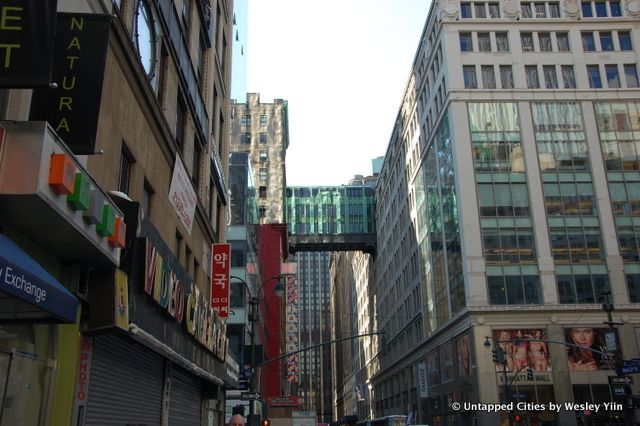

The Bridge of Sighs (White Street and Centre Street)
Venetian convicts used to get their last glimpse of the city before being imprisoned or executed while walking through the enclosed Bridge of Sighs. The same fate awaited those who crossed the bridge in New York’s Manhattan Detention Complex, also known as the Tombs, on their way to the gallows. The nickname resulted not just from the building’s complicity, but from the foul conditions of the original jail, building, and neighborhood. Since then, however, the buildings have been renovated, so the building and bridge should be less glum aesthetically than it once was.
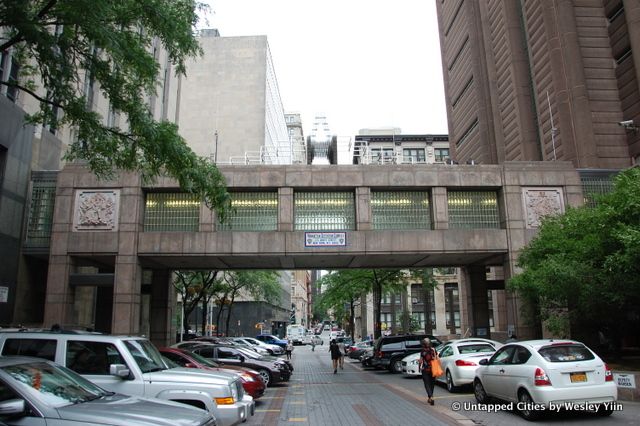
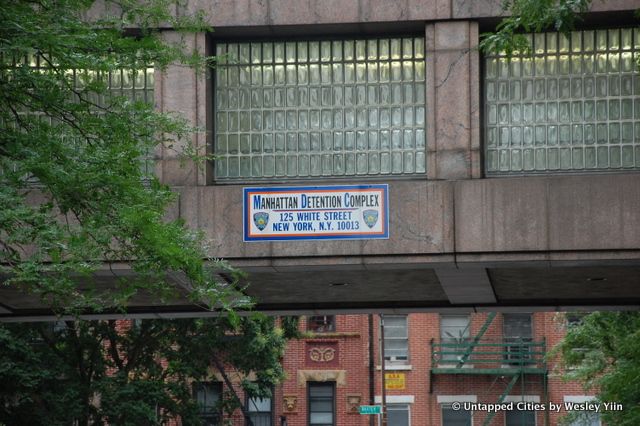
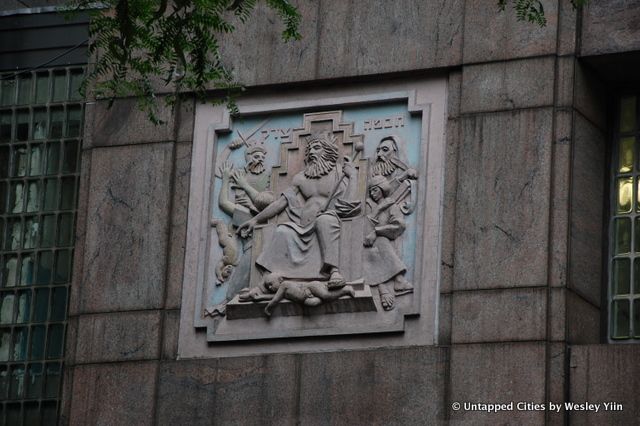
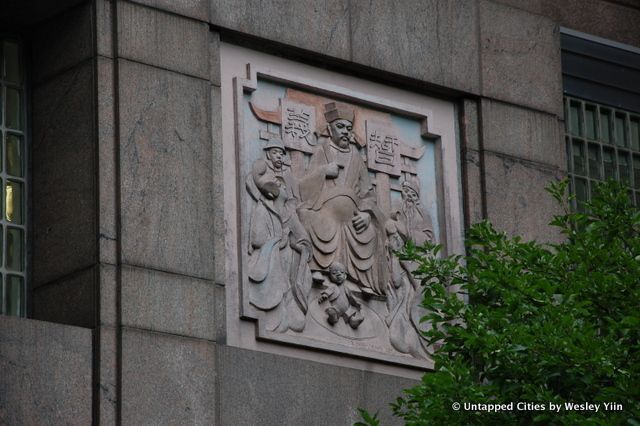
Columbia University Main Campus (116 Street, between Broadway and Amsterdam)
Many buildings on the northern end of Columbia’s Morningside Heights campus connected by skybridges, forming a small network. These buildings include (in sequence) Chandler Hall, the new Northwest Corner Building, Pupin Hall, the Schapiro Center for Engineering and Physical Science Research, and Mudd Hall. All of these buildings contain research facilities, which is perhaps why the bridges were constructed–to control the temperatures of materials and specimens. Pupin Hall was landmarked for being where a significant portion of the Manhattan Project was completed.

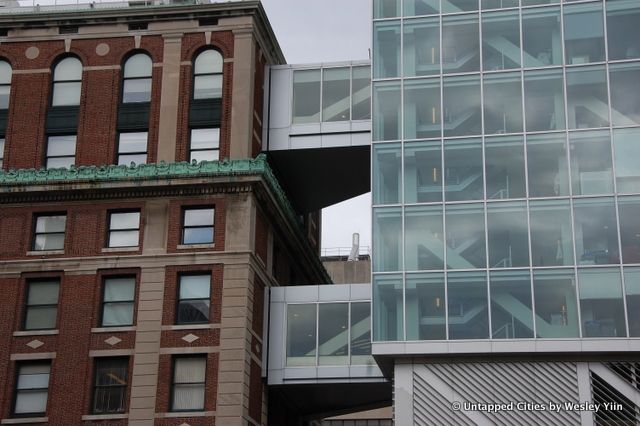

Columbia University Medical Center (Fort Washington Ave, between 168th and 165th Streets)
Like its sister campus in Morningside Heights, the Medical Center of Columbia University in Washington Heights has a few notable skybridges. Between Harkness Pavilion and the Millstein Hospital Building, for instance, are four skybridges spanning multiple floors of the two buildings. These were presumably constructed to help patients move more easily between buildings.
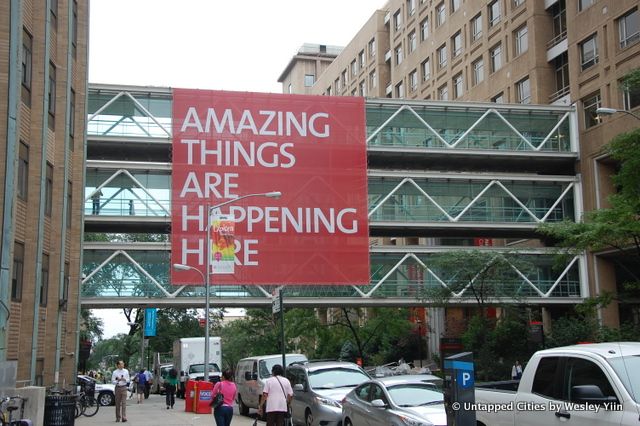
Three skybridges stacked on top of one another…

… And a fourth another five floors up.
Chelsea Market (10th Ave, between 15th and 16th)
In our last skybridge roundup, we featured an ornate skybridge at Chelsea Market. If you turn the corner, you’ll find another one going across 10th Avenue. You can see this easily from The High Line.
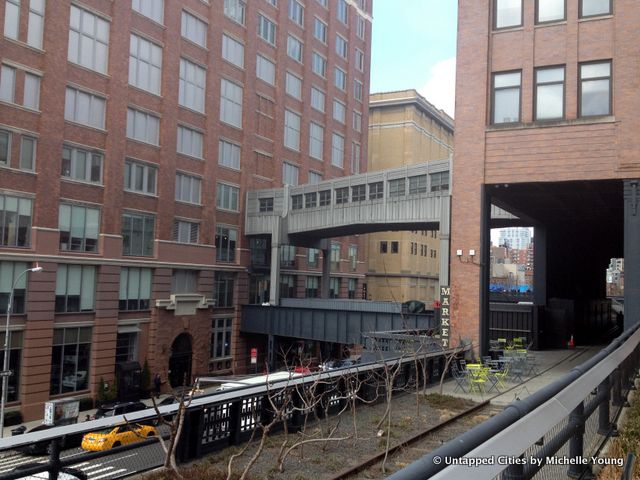
Wanamaker’s Department Store
The opening of Wanamaker’s New York City location at Astor Place was buzz-worthy for a number of reasons. One was perhaps the vastness of the store: spanning multiple buildings, the department store was built with a footbridge so that shoppers wouldn’t have to step outside to cross the street. One of the store’s buildings has since been demolished, but the other remains as a K-mart, sadly without a skybridge.
See more historic and modern skybridges in Part I of this series. Get in touch with the author @YiinYangYale.
Subscribe to our newsletter